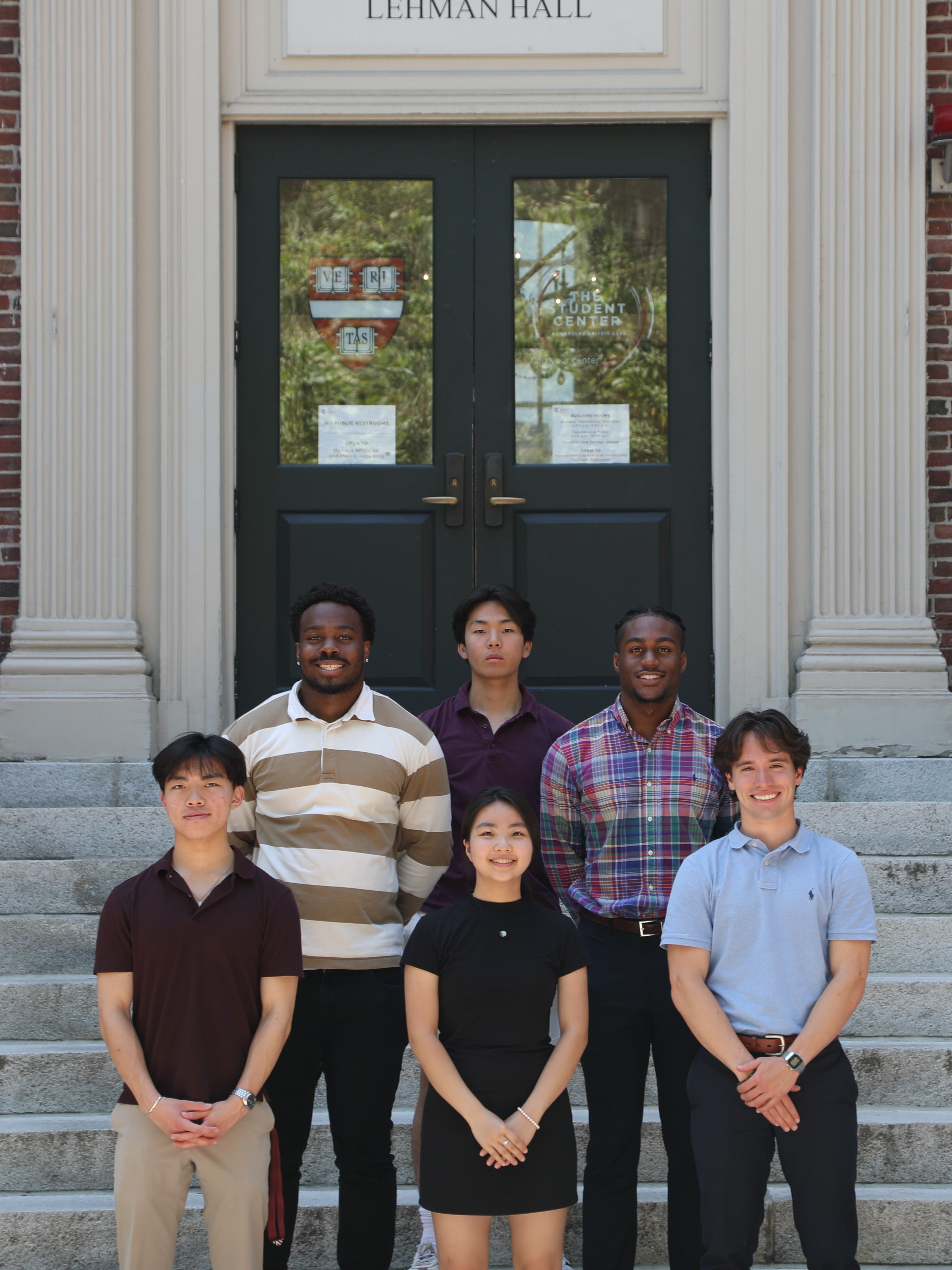PSYCHOLOGY
Can a Brain Implant Maintain an Alzheimer's Patient's Memories?
Santiago Lobos Melazzo
Published: 05 September 2022 | Download
Student's Published Works
Abstract
Alzheimer's Disease is a neurological degenerative disease that starts in the limbic system and proceeds to decay the rest of the brain. There’s no pinpointed cause for the disease but autopsies discovered a correlated malfunction of Tau and Beta-Amyloid proteins in the neurons. The disease has no cure but is constantly being studied with the minimum intent of slowing it down. The brain has various devices that deal with translating some of the senses into electrical impulses to artificially inform the brain of each particular sense. Technology has also advanced to store large amounts of information in the smallest of devices. Combining the current neuro implants with the technology of memory banks, a device can in theory be made so that it sends information to the cortex of the brain so that patients recognize the things they witness at a basic level. Implants would recognize objects and people and activate files with data to inform the patient of what they’re presented.
Keywords: Alzheimer's, memory, neurological, degenerative, technology
Introduction
Alzheimer’s Disease is a degenerative disease that affects the brain. The proteins Tau and Beta-Amyloid lose control of the neurons and start making them decay. The first area where this disease strikes is the limbic system and the first sign that announces its arrival is the memory loss and functions related to memory failure. The concept being questioned is if an implant can help relieve the symptoms caused by Alzheimer’s. A memory chip or drive that can alternate the functions the limbic system performs in the brain, to keep the patients conscious and the relatives alleviate for a little longer until the disease evolves to the next phases.
The Disease
The degeneration has unknown causes, but autopsies have provided a common denominator between diseased Alzheimer’s patients. The brains of these people had the proteins Tau and Beta-Amyloid in uncanny situations (Jockers, 2021; U.S. Department of Health and Human Services, 2017). The Tau proteins are macromolecules mainly found in the microtubules of the neurons. When people develop the Alzheimer’s disease, the tau proteins unravel from the structure of the microtubules and the unstructured parts of the microtubules start spreading up and pailing in different areas of the neuron (Drummond et al., 2020; Ellison, J. M., 2021; Polan, S., 2020). The Beta-Amyloid comes from the breakdown of a larger protein called Amyloid Prosecutor Protein (APP). The APP is at the neuron’s membranes and it is naturally sliced by two enzymes, Beta and Gamma Secretase (ALZFORUM, n.d.). Beta Secretase cleavages the APP through the outer membrane, and the Gamma Secretase cleavages it through the inner membrane. The remaining part of the APP that was cut between the two enzymes is called Beta-Amyloid. It is left with 38 to 40 long amino acids peptide. It floats in between the neurons to be decomposed by the brain’s nutrients. In Alzheimer’s patients, there is an inexplicable mutation in the Gamma Secretase enzyme which modifies the cut length of the Beta-Amyloid. Instead of being 38 to 40, it becomes 42 amino acids long peptide, thereby being unable to be absorbed by the outer cell environment (Haugabook, S. & Sambamurti, K., 2007). Eventually, these 42 long Beta Amyloids start to opulate outside the neurons and start forming plaques, called Amyloid Plaques. These two protein malfunctions, with unknown causes and no discovered correlation, are the more prominent characteristics of a brain with Alzheimer’s disease. When both errors develop, neurons start dying one by one, mainly located in the limbic system, starting with the hippocampus and the entorhinal cortex. The decay of these areas causes the first symptoms to be memory loss, and the further the decaying disease expands the more neural functions patients start to lose (Fidel Romano et al., 2007). The inevitable outcome of suffering the disease is death. There are some treatments to try and slow down the progress but no cure, yet (Long, J. M., & Holtzman, D. M., 2019).
Technology
Technology nowadays is being implemented in various ways into the brain. There are not only brain implants but also robots that can perform neurosurgery, in development. Currently, there are brain implants aiding sight and hearing, with more technology under development. The Sight implant was developed in order to allow the blind to see.
Figure 1: Second Sight Orion 1
It uses an external camera where one version has the camera installed in sunglasses. It is connected to a transmitter located in the head in direct contact with the implant in the brain. The device passes the information from what the camera sees into electrical pulses that the implant translates and sends through the cortex. Through this aid, the blind has reported their newly acquired ability to see, although reports also express the need for constant maintenance of the device (Second Sight Orion 1, n.d.). There are also hearing aids that work in a similar way (Devlin, H., 2019); an external device to capture the sound waves and an internal device that translates them into pulses and sends them to the respective part of the brain.
Figure 2: Coclear Implant
Besides these two implants that assist the senses to be felt, there is a new technology developed with the aim to implement synchronization with other technologies, no longer limiting the brain's activity to human functions but to robotic ones as well. Ideas for implants that will have the ability to operate external technologies like phones and/or computers already seem concrete and possible (Kennedy, R., 2021). Though, with all of these brain devices and the complexity of the brain itself, robots are being made in order to operate through the complexities and reduce the risk that could be man-made. The science working with these robots designates it as Precision Automated Neurosurgery, and it is also a work in progress (Qureshi, Y. A. & Mohammadi, B., 2018).
Idea
The question is if an implant could possibly maintain the memories of Alzheimer’s patients to alleviate the first phase of the disease. Combining the current and future technologies, it might be possible. It is all theoretical but here is how one could possibly see it function: the idea would be to have a memory chip or a transmitter connected to external digital memory, in which the brain can look for information when trying to remember. This would be done by storing information in forms that vision and hearing implants can activate upon detecting similar information. Since the implants can translate information from what they see and hear, information would be stored that could be triggered by what one sees or hears. For example, once someone sees his/her daughter, the visual implant would activate the memory file about the daughter and this file would indicate to the patient that the one he/she sees is his/her daughter. A similar process would be followed with sounds.
The technology has already been tested. We can send information through the brain and make it understand things based on electrical pulses. Additionally, we have devices that can store information in different files. A combination of these can make patients aware of their surroundings.
The device would call upon stored information by visual and sonar activation. However, as technology advances, it could be upgraded into something more. Once it’s advanced enough, the implant could allow the download of every lived experience into an upgraded memory bank and provide the patients with an artificial eidetic memory. Although this level of technology would be ideal, first, the principle of the initial device should be successful in its functions; something that won’t be easy to accomplish as the complexity of both the brain and the disease can bring numerous conflicts. The brain itself is complex, but the disease apports its own level of unpredictability due to the absence of information. It is unknown how the disease would affect the artificial electrical impulses or how the beta-amyloid plaques might prevent its proper function. However, if nothing unprecedented occurs, the device could work and bring forth tranquillity to the patient’s families, allowing the sick to live their lives at their basics until the next phase of the disease takes over the rest of the brain.
Conclusion
The degenerative Alzheimer’s Disease, as mysterious as it is, can in theory be appeased by brain implants. The combination of current and future neuro devices allows for the innovation of a single complex device implanted in the brain that could indulge information about the things a patient witnesses, essentially giving the person a sense of recognition as the limbic system decays.
References:
Jockers. (2021). Alzheimer's disease: Symptoms, causes and natural support strategies. DrJockers.com.
https://drjockers.com/alzheimers-disease/
U.S. Department of Health and Human Services. (2017). What happens to the brain in Alzheimer's disease? National Institute on Aging.
https://www.nia.nih.gov/health/what-happens-brain-alzheimers-disease
Drummond, E., Pires, G., MacMurray, C., Askenazi, M., Nayak, S., Bourdon, M., Safar, J., Ueberheide, B., & Wisniewski, T. (2020). Phosphorylated Tau Interactome in the human Alzheimer's disease brain. OUP Academic. Available at: https://academic.oup.com/brain/article/143/9/2803/5893817
Ellison, J. M. (2021). Tau protein and Alzheimer's disease: What's the connection? Tau Protein and Alzheimer's Disease: What's the Connection? | BrightFocus Foundation. https://www.brightfocus.org/alzheimers/article/tau-protein-and-alzheimers-disease-whats-connection
Polan, S. (2020). The study reveals how renegade protein interrupts Brain Cell function in Alzheimer's disease. NYU Langone News. https://nyulangone.org/news/study-reveals-how-renegade-protein-interrupts-brain-cell-function-alzheimers-disease
Haugabook, S., & Sambamurti, K. (2007). Gamma secretase. Gamma Secretase - an overview | ScienceDirect Topics. https://www.sciencedirect.com/topics/neuroscience/gamma-secretase
Fidel Romano, M., Daniela Nissen, M., Maria Del Huerto Paredes, N., & Alberto Parquet, C. (2007). Enfermedad de Alzheimer - UNNE. https://med.unne.edu.ar/revistas/revista175/3_175.pdf
Long, J. M., & Holtzman, D. M. (2019). Alzheimer's disease: An update on pathobiology and treatment strategies. Cell. https://www.ncbi.nlm.nih.gov/pmc/articles/PMC6778042/
Second Sight Orion 1. (n.d.). Retrieved from https://www.infotecnovision.com/wp-content/uploads/2017/09/Ori%C3%B3n-I-300x300.jpg.
Medgadget. (2016). Retrieved from https://www.medgadget.com/2016/10/second-sights-orion-brain-implant-bypasses-visual-system-let-blind-see.html
Devlin, H. (2019). Scientists create mind-controlled hearing aid. The Guardian. https://www.theguardian.com/society/2019/may/15/scientists-create-mind-controlled-hearing-aid
Cochlear Implant. (n.d.). Retrieved from https://www.mayoclinic.org/-/media/kcms/gbs/patient-consumer/images/2013/08/26/11/03/an01963_ds00172_im03853_ans7_cochlearimplant09thu_jpg.jpg
Kennedy, R. (2021). What is Neuralink? how does the technology work and what can a person do with it? Republic World. https://www.republicworld.com/technology-news/other-tech-news/what-is-neuralink-how-does-the-technology-work-and-what-can-a-person-do-with-it.html
Qureshi, Y. A., & Mohammadi, B. (2018). Robotic oesophagogastric cancer surgery. Annals of the Royal College of Surgeons of England. https://www.ncbi.nlm.nih.gov/pmc/articles/PMC5956573/





